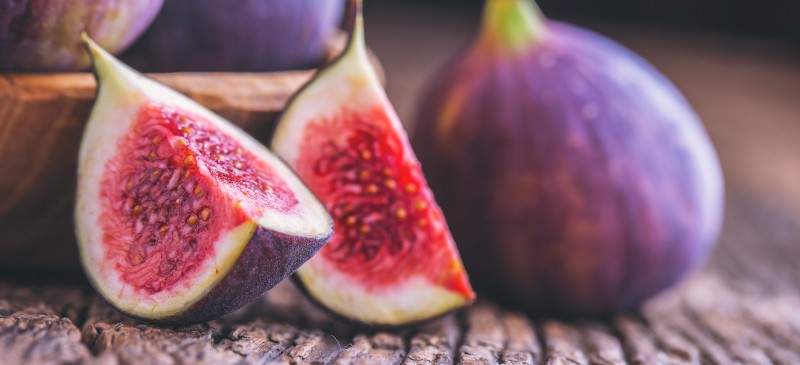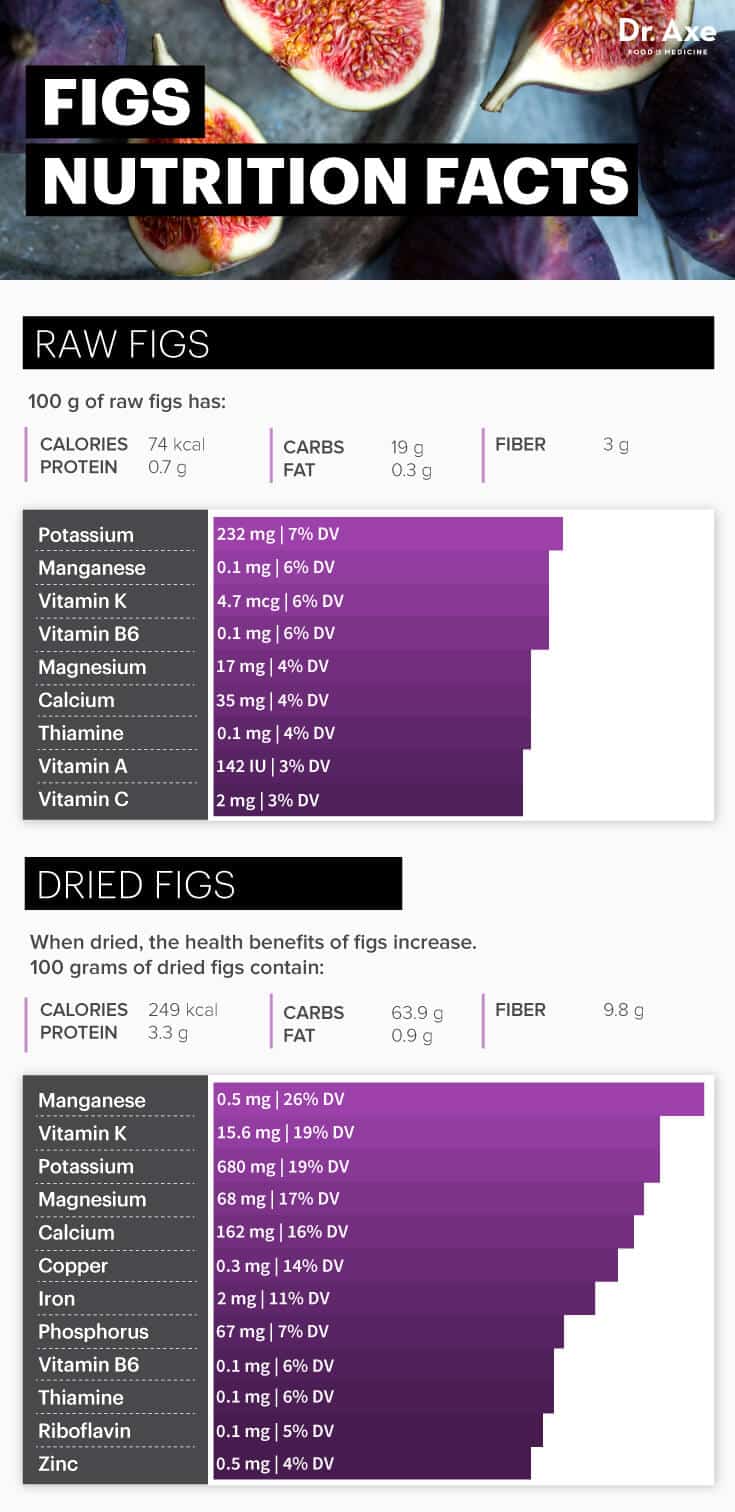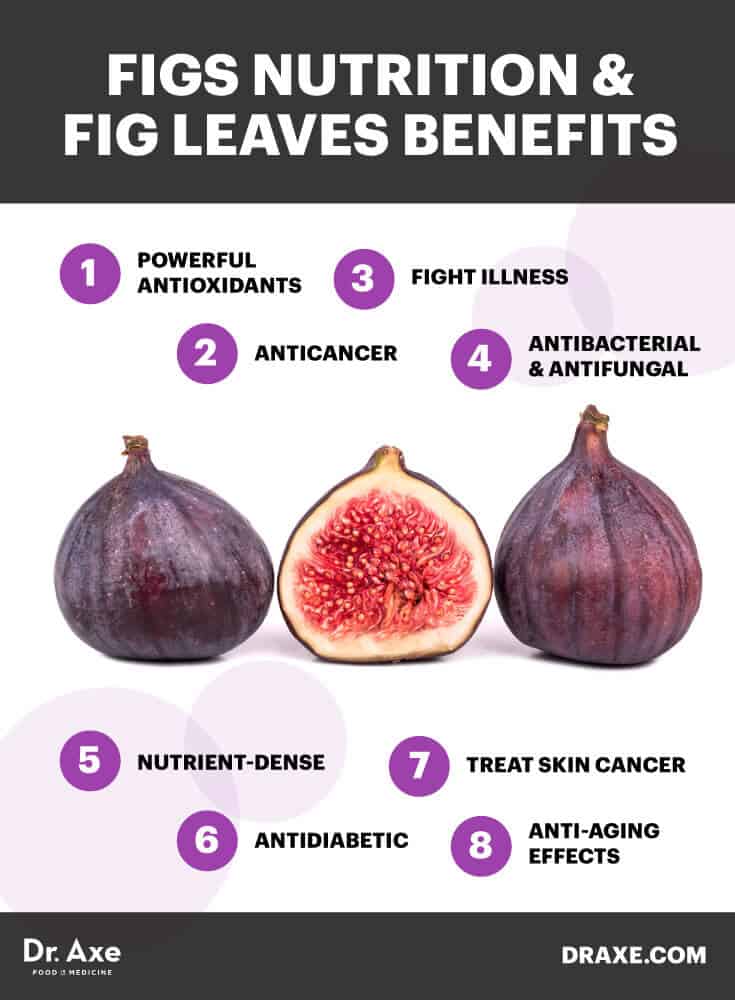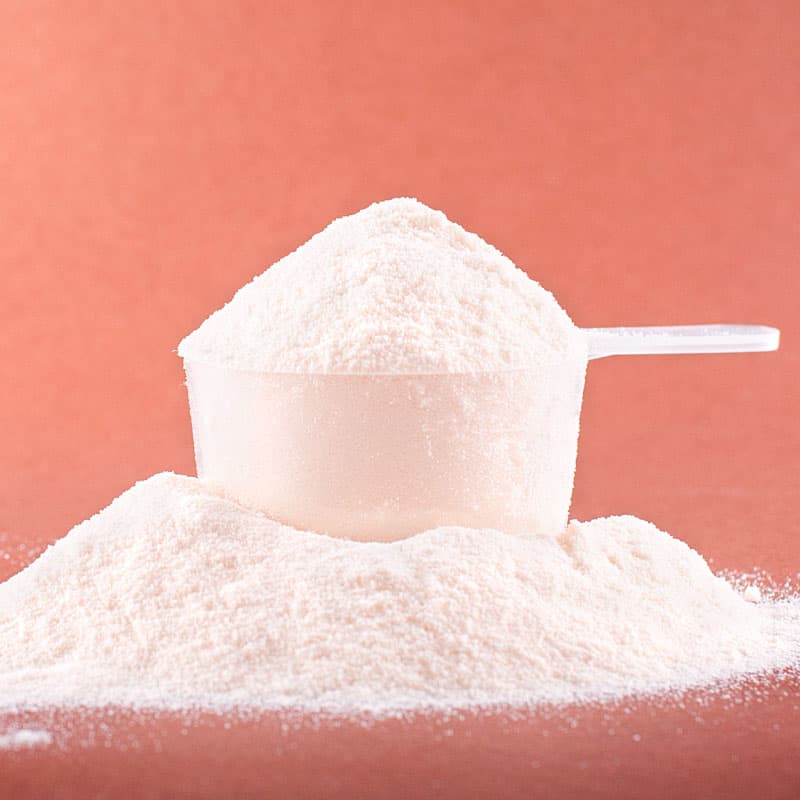This Dr. Axe content is medically reviewed or fact checked to ensure factually accurate information.
With strict editorial sourcing guidelines, we only link to academic research institutions, reputable media sites and, when research is available, medically peer-reviewed studies. Note that the numbers in parentheses (1, 2, etc.) are clickable links to these studies.
The information in our articles is NOT intended to replace a one-on-one relationship with a qualified health care professional and is not intended as medical advice.
This article is based on scientific evidence, written by experts and fact checked by our trained editorial staff. Note that the numbers in parentheses (1, 2, etc.) are clickable links to medically peer-reviewed studies.
Our team includes licensed nutritionists and dietitians, certified health education specialists, as well as certified strength and conditioning specialists, personal trainers and corrective exercise specialists. Our team aims to be not only thorough with its research, but also objective and unbiased.
The information in our articles is NOT intended to replace a one-on-one relationship with a qualified health care professional and is not intended as medical advice.
Figs Nutrition: The Anticancer, Fiber-Rich, Antibacterial Powerhouse
May 4, 2018

You probably associate figs with the extremely popular fig newton, which if we’re being perfectly honest is not the healthiest of options. While I don’t recommend eating those packaged fig goodies, figs nutrition actually has an insane amount of health benefits.
Of course, when I say figs nutrition, I mean the fruit superstar. Figs have a long, interesting past and a number of great health benefits. So what makes figs nutrition so valuable, why should you include them in your diet and what type of fig recipes are out there? Let’s take a look.
Figs Nutrition Facts
Common figs grow on the ficus tree (ficus carica), which is a member of the mulberry family. Originally from Western Asia and the Middle East, they’re now grown in temperate climates around the world.
Figs can be consumed either raw or dried, which affects the nutritional value. Thus, 100 grams of raw figs nutrition contains about: (1)
- 74 calories
- 19 grams carbohydrates
- 0.7 gram protein
- 0.3 gram fat
- 3 grams fiber
- 232 milligrams potassium (7 percent DV)
- o.1 milligram manganese (6 percent DV)
- 4.7 micrograms vitamin K (6 percent DV)
- 0.1 milligram vitamin B6 (6 percent DV)
- 17 milligrams magnesium (4 percent DV)
- 35 milligrams calcium (4 percent DV)
- 0.1 milligram thiamine (4 percent DV)
- 142 IU vitamin A (3 percent DV)
- 2 milligrams vitamin C (3 percent DV)

When dried, the health benefits of figs increase — thus, 100 grams of dried figs nutrition contains about: (2)
- 249 calories
- 63.9 grams carbohydrates
- 3.3 grams protein
- 0.9 gram fat
- 9.8 grams fiber
- 0.5 milligram manganese (26 percent DV)
- 15.6 micrograms vitamin K (19 percent DV)
- 680 milligrams potassium (19 percent DV)
- 68 milligrams magnesium (17 percent DV)
- 162 milligrams calcium (16 percent DV)
- 0.3 milligrams copper (14 percent DV)
- 2 milligrams iron (11 percent DV)
- 67 milligrams phosphorus (7 percent DV)
- 0.1 milligrams vitamin B6 (6 percent DV)
- 0.1 milligrams thiamine (6 percent DV)
- 0.1 mg riboflavin (5 percent DV)
- 0.5 milligram zinc (4 percent DV)
Health Benefits of Figs Nutrition
Figs nutrition contains many vitamins and minerals that provide health benefits to a number of bodily systems. They’re an easy, healthy snack and can be added to many meals to for another boost of nutrients.
Some of the biggest health benefits of figs nutrition include:
1. Powerful Antioxidant
Figs provide a huge service to the human body with their antioxidant capabilities. Because oxidation affects almost all body systems, the damage it causes has been linked to many major diseases, aging and cancer — as high-antioxidant foods, figs help stave off these conditions. (3)
Some types of figs have more than others, but most are rich in polyphenols, which help combat oxidative stress. (4, 5) These natural health boosters are located in the fruit, leaves, pulp and skin. (6) Studies also show that properly dried figs can be an even better source of phenolic compounds and have increased levels of antioxidant activity than their raw or improperly dried counterparts. (7) This is probably why figs were revered throughout history; easily stored, dried figs could provide incredible health benefits for long voyages and dry climates that prevented access to fresh fruit.
2. Anticancer Properties
Figs have a reputation in traditional medicine as a remedy for many health problems, including as a natural cancer treatment. For instance, a study by the Department of Natural Medicinal Chemistry at China Pharmaceutical University shows that some elements contained in figs are toxic to various human cancer cell lines. (8)
Although there is more research needed, there are recommendations encouraging researchers to find out more about how figs’ bioactive compounds can combat illness because of the success of numerous findings thus far. (9)
3. Treat Common Illnesses
Because of the fig’s long history, it has been used to treat a wide range of common ailments for thousands of years. More than 40 illnesses connected to the digestive, endocrine, reproductive and respiratory systems have been treated with fig fruit, extracts and components of the fig tree.
Studies have shown figs to be a good source of treatment for anemia, cancer, diabetes, leprosy, liver disease, paralysis, skin diseases, ulcers, gastrointestinal tract and urinary tract infections, and more. (10) Figs and the fig tree are considered promising candidates for helping develop new drugs as well, and researchers hope to continue finding new medicinal uses for the plant.
4. Antibacterial and Antifungal Effects
Figs can act as a natural antibacterial and antifungal agent. A review by the Drug and Herbal Research Centre at the Universiti Kebangsaan in Malaysia cited two studies that showed fig extract’s ability to combat a strand of oral bacteria, as well as various fungi and microbes. (11)
There are also studies conducted in grass carp that shows effectiveness in figs’ ability to stimulate immune system response, thus making figs tremendous immune system boosters. (12) This may explain why figs are such great common illness fighters, which are typically the work of bacteria and other invaders.
5. Great Source of Potassium, Fiber and Other Depleted Nutrients
Potassium and fiber are two vital components to a healthy diet that many Westerners simply don’t get enough of. Figs are a high-fiber food whether raw or dried, while they also provide anywhere from 7 percent to 19 percent of your daily potassium intake depending on how they’re prepared — thus, eating figs helps overcome low potassium levels.
Fiber helps aid the digestive system, reduces the risk of heart disease and helps with weight loss by helping you feel full. Potassium is found in every cell in the body and is essential to maintain normal body functions. Dried figs nutrition is also great sources of manganese, magnesium and calcium, all of which also don’t appear in our diets as much as they should. Snacking on figs is a low-calorie way to up your intake of these essential nutrients.

Health Benefits of Fig Leaves
If you are lucky enough to have access to a fig tree, the leaves of the trees are also incredibly valuable to your health, mostly due to their antioxidant abilities. The leaves can be dried and made into teas or extracts, which is very common in areas of the world with substantial fig tree growth.
1. Antidiabetic Effects
Preliminary studies show reduction of glucose in the blood of rats when given an extract made from fig tree leaves. Further results from the the studies show there was also a decline in the levels of cholesterol, as well as help normalizing antioxidant activity to help combat oxidative stress caused by diabetes. (13, 14)
Fig fruit has also been proven as a powerful treatment for the side effects of diabetes. With anti-inflammatory and antioxidant activities, figs are able to normalize many bodily functions sometimes damaged by diabetes, making them a potential diabetes natural remedy. (15)
2. Help Treat Skin Cancer
Fig leaves are great providers of bioactive compounds that are great at fighting free radical damage. (16) As a result, some studies have used information about the makeup of the fig leaf to develop better forms of photodynamic therapy to treat certain types of skin cancer. (17)
3. Anti-Wrinkle Capabilities
There have been multiple studies using fig tree leaf extract (combined with other fruits and alone) that have shown successful examples of anti-wrinkle capabilities. Individuals using creams including fig leaf and fig fruit extracts showed significant decrease in length and depth of facial wrinkles, thanks to antioxidant and anti-collagenase activity. (18)
Another study published in the Indian Journal of Pharmaceutical Sciences even concluded that creams containing fig extract could also be used to help hyper pigmentation, acne and even freckles. (19)
Interesting Facts About Figs
Figs are actually developed from inverted flowers called a syconium. The fig flesh is made from the matured flowers, which bloom inside the skin and are therefore never seen. Wild fig trees can survive up to 100 years and can grow as high as 100 feet.
Fig tree leaves release a pleasant, woodsy-green fragrance. Some people dry the leaves and use them in perfume or in potpourri for their homes. Fig trees produce a natural latex sap that is also used for a number of practical and medicinal purposes.
Figs were so popular among the Greeks that there were even laws made to prevent exportation, and they’re an essential element in the Mediterranean diet, which is one of the healthiest diets in the world. Aside from being an incredible source of dietary fiber, this curious fruit is delicious and filled with a number of essential vitamins and minerals.
Figs have a history as rich as their taste. Dating back as far as 5,000 B.C., the fig is said to be one of the first plants ever cultivated by humans. Archeological findings in Neolithic villages revealed fossils of figs, predating other known forms of agriculture like wheat and barley. Figs are mentioned often in the Bible, as they were cultivated in many areas of the world where biblical events took place. In fact, some believe that in the story of Adam and Eve, the forbidden fruit may in fact be a fig instead of an apple. They’re sometimes represented as a sign of peace, abundance and prosperity.
Figs are known for their sweet and juicy flesh, tender skin and crunchy seeds. They’re highly perishable and are commonly dried to preserve them. And unlike many other fruits and vegetables, studies have shown that the health benefits of figs actually increase after drying. They can be prepared in a number of ways and make a great pairing with meats and cheeses.
How to Purchase and Prepare Figs
Figs can be found at most major grocery stores. Prime harvesting is mid-June to mid-October, with ripe figs only lasting seven to 10 days from when they’re picked.
Choose figs that have a rich color and are tender but not mushy. Once you bring the fruit home, Whole Foods Markets recommends storing figs outside of the container you purchased them in and in a small bowl in the refrigerator. (20) They will only store for a few days before going bad, similar to an avocado.
Drying figs can extend their shelf life and provide healthy snacks on the go. When properly stored, dried figs can last 18 to 24 months.
You can oven-dry figs following these steps: (21)
- Preheat oven to 140 degrees F (or lowest setting with the oven door open).
- Wash figs thoroughly with water. Dry.
- Cut the figs in half from stem to tip.
- Lay figs cut side up on a well-ventilated rack.
- Place figs in the oven, turning occasionally through drying process.
- Let figs dry for 8–24 hours, until the outsides are leathery and no juice can be seen on the inside.
Figs are commonly made into jams and preserves to allow them to keep longer. You can also freeze figs within 12 hours of harvesting to extend their freshness.
Fig Recipes
There are many fig recipes you can try. Here are a few of my favorites:
- Orange, Fig & Gorgonzola Salad
- Fig and Ricotta Pizza with Thyme and Honey
- Grilled Prosciutto Wrapped Figs with Blue Cheese and Pecans
Potential Side Effects of Figs
People with skin and allergies to mulberry, natural rubber latex or weeping fig could have potential reactions to fig tree components, such as the fruit and leaves. If you’re harvesting the fruit directly from the tree, it’s best to wear long sleeves and gloves.
People with diabetes should be cautious when consuming or using figs medicinally, as they have effects on glucose levels in the blood. This also goes for those on diabetes medication and insulin, as figs can alter their effectiveness. As always, speak with a doctor before using figs medicinally or as a supplement.
Final Thoughts on Figs Nutrition
- Figs nutrition can be boosted by drying the figs.
- Figs provide powerful antioxidants, help fight cancer, treat common illnesses, contain antibacterial and antifungal properties, and provide potassium, fiber and other depleted nutrients.
- Fig leaves are antidiabetic, help treat skin cancer and have anti-wrinkle capabilities.
- Figs only last seven to 10 days after they’re picked, but you can dry figs to extend their shelf life and boost some of their nutrients.
- Figs make a great addition to many recipes and are also a tremendous, healthy snack.











